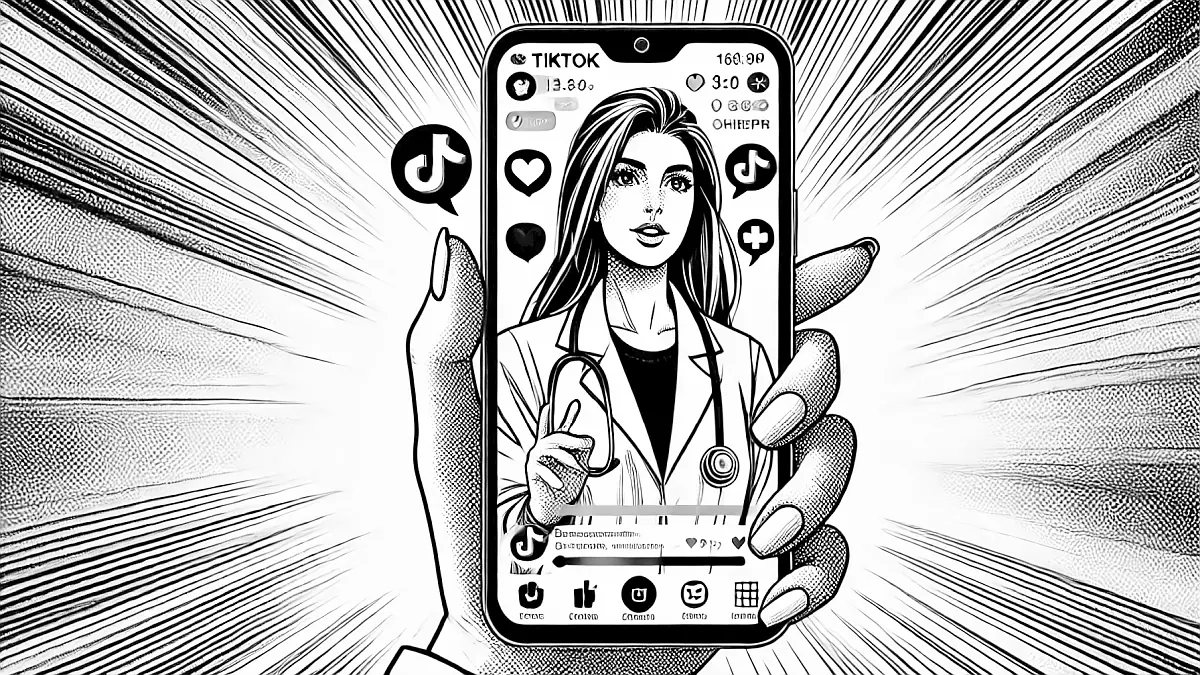 illustration: DALL-E
illustration: DALL-EThe researchers presented their findings at the American Academy of Paediatrics conference in Denver. More than half of the videos contained information that contradicts medical knowledge. They assessed the creators’ identities, video topics, presence of false claims, and engagement metrics. Disinformation was defined as content that opposes recommendations from the American Academy of Paediatrics and the CDC. It turned out that 61% of the videos included medically inaccurate information. Furthermore:
- 80% of disinformation videos were created by parents and influencers, not medical professionals.
- False content gained significantly more attention, with an average of 583,000 views per video, compared to 214,000 for accurate ones.
The study revealed the most common myths being spread:
- questioning vaccine safety (36%).
- promoting "natural" therapies instead of proven treatments (29%).
- spreading misinformation about breastfeeding and infant nutrition (18%).
- rejecting paediatric care (17%).
According to Dr Maria A. Canas-Galvis, lead author of the study, doctors must now not only provide treatment but also educate parents and help them interpret online content. What families see on TikTok increasingly shapes their health decisions.
COMMERCIAL BREAK
New articles in section Media industry
Advertising market 2025. Poland, Europe and the World
Marcin Grządka
The global advertising market is growing by 8.8% in 2025 and will reach a value of 1.14 trillion dollars. The industry result in Europe records slightly lower dynamics, at the level of 5.8%. In this comparison, Poland performs clearly above the average. We will record an increase of 8.9% this year and a value of 18.56 billion PLN - estimates WPP Media in the annual report "This Year Next Year".
The print media market 2025. Three global trends
Krzysztof Fiedorek
The market value is 359.53 billion dollars, yet the erosion is visible to the naked eye. The decline for newspapers will amount to -2.3 percent. Despite this, print retains strength: it generates 76 percent of subscription revenues and enjoys 82 percent consumer trust. The future of the industry is defined by hybrid strategies and niche specialization.
Journalism in the age of AI. Why people prefer humans over machines
Krzysztof Fiedorek
Only 12% of people accept news created solely by AI, while 62% prefer those written by humans. At the same time, only 19% notice labels indicating the use of artificial intelligence, while younger audiences ask AI to explain the content to them. These are the findings of the Reuters Institute report on artificial intelligence in media.
See articles on a similar topic:
Trends in Media and Entertainment. DataArt Predictions for 2019
KF
Increasing consumption of content on mobile devices, growing demand for on-demand services, and the rapid development of user-generated content are the trends expected to dominate the tech sector in 2019, according to DataArt, a global technology consulting firm.
E-commerce Forecasts in Poland. Trends for 2024 and Beyond
Krzysztof Fiedorek
In 2024, e-commerce in Poland is reaching new heights, with an increasing number of consumers regularly shopping online. The report "E-shopping Habits of Poles 2024," prepared by SAMOSEO analysts, analyzes current trends and forecasts the industry's near future.
Safari Surpasses Opera. A New Shift in the Browser Market in Poland
Krzysztof Fiedorek
In the summer of 2024, a historic event occurred in Poland's browser market. In July and August, Safari surpassed Opera on all devices for the first time. Data from the StatCounter report indicates that Apple's browser maintains a steady market share while Opera is gradually but noticeably losing ground.
Media in the Balkans and Turkey
Michał Kuźmiński
The Balkans have long been referred to as a “melting pot,” and for good reason. This region is highly diverse and quite unstable. Consequently, the media landscape here is varied as well. In some places, such as democratic Greece, a member of the European Union, the media market is stable and easy to navigate.





























